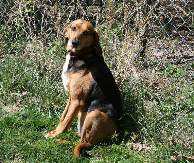Hello my dear friends, Today we are talking about foxhound dog prices in India. This is a very good and popular breed of dogs, which is used for hunting and tracking the animals.
The name foxhound comes from the Latin word “hounds” because it was originally bred to hunt the wild red foxes.
They have been used as a working dog since the Middle Ages. These days, they are also used for guarding livestock and protecting gardens and farms.
Foxhounds are excellent family pets too. Their size makes them great companions for children and adults alike.
But most importantly, these dogs are extremely intelligent and trainable. So if you want your kids to learn responsibility and obedience, then this is the best choice for you.
History of Foxhound Dog Breed
Foxhounds are a rare breed of dog that originated in the United Kingdom. They were originally bred to hunt foxes, but now they have become one of the most popular breeds of dogs for hunting and show purposes. The history of this breed can be traced back to 15th century England when King Henry VIII brought his pack of hounds into the royal court.
These dogs were trained to track down and finish the wild red foxes that lived in the forests around London. It wasn’t until the early 19th century that the first foxhound club was founded in England.
Today, there are more than 200 clubs all over the world that keep the bloodlines of this breed alive.
Appearance and Size of Foxhound Dog
The Foxhound is a large, powerful dog. It has a long, lean body and muscular legs. The head is broad and square with a flat skull. The ears are set high on the sides of the head. They have a slight curve to them. The tail is thick at its base and tapers off as it gets longer. The coat is short and dense. It is usually black or brown in color. There may be some white markings around the eyes.
The foxhound’s temperament can vary from friendly to aggressive. It is an alert, intelligent breed that is eager to please. Its intelligence makes it easy to train. It needs lots of exercises and mental stimulation. It will do well in homes where there are children and other pets.
Height: 29-30 inches
Weight: 70 to 80 lbs
Breed Standard of Foxhound Dog
- Here is the standard of this breed:
- Head – Long and wedge shaped
- Ears – Large and erect
- Nose – Black
- Muzzle – Short and blunt
- Neck – Short and muscular
- Chest – Deep and wide
- Back – Strong and muscular
- Loin – Well muscled
- Tail – Set on high
- Feet – Round and compact
- Color – Any color except brindle
- Coat – Double coated
- Size – Medium sized
- Tail length – Long
- Gait/Movement – Fast and powerful

Characteristics of Foxhound Dog
If you are looking for a loyal companion who will protect your home and property, then this is the right choice for you.
The foxhound is not only a hunting dog, but it is also a guard dog. It is known to be aggressive towards strangers and unfamiliar people.
It is recommended that you get a puppy instead of an adult dog. Puppies are much easier to train and socialize.
Also, it is better to choose a male over a female because males are more dominant than females.
How to take Care And Feeding a Foxhound Dog
Foxhounds are wonderful dogs. They have the greatest personalities, and they’re extremely loyal companions who love their owners unconditionally. But foxhounds can be difficult to train if you don’t know how to take care of them properly. If you want to make your dog happy and healthy, it is important that you understand how to feed him correctly.
- Make sure to keep your dog well-groomed. It is essential for any animal to maintain cleanliness in order to stay healthy. A dirty or unkept dog is likely to become ill, so make sure to brush his teeth regularly and bathe him once every week. You should also check his fur for parasites, fleas, ticks, and mites.
- Be careful about feeding your dog too many treats. This might lead to obesity which could cause health problems later.
- Don’t give your dog table scraps. There are certain foods that he shouldn’t eat since they may contain harmful toxins.
- Do not let your dog drink from puddles or streams. These sources of water often carry disease-causing bacteria. Instead, you should provide your dog with filtered drinking water.
- Keep your dog away from cigarette smoke. Tobacco contains nicotine which is toxic to dogs.
- Make sure that your dog gets enough exercise. He needs to play and run around as much as possible. Exercise helps prevent boredom and stress.
- Watch out for signs of illness. Your dog may experience symptoms such as diarrhea or vomiting, but these are usually mild and easy to treat.
- Use caution when giving your dog medicine. Some medications can be dangerous to animals. Always consult a veterinarian before administering any medication.
- Never leave your dog unattended or allow him to roam freely outdoors. Dogs need to feel secure and safe at all times.
- Provide your dog with ample opportunities to socialize with other pets. These interactions help develop strong bonds among friends.
- When playing with your dog, avoid getting into fights. Animals tend to fight each other when they are stressed. So, try to relax your dog by gently petting him and talking softly to him.
- Have fun! Playing with your dog is one of the best ways to bond with your furry friend.
Care Requirements
Feeding
Feed your dog twice daily. A balanced diet consisting of fresh foods is essential for a healthy life. Your dog should eat two meals per day, one in the morning and one in the evening. Give him small portions throughout the day. Don’t feed your dog any food after 8 pm. This helps him sleep better.
Exercise
Your dog needs regular physical activity. He should get 30 minutes of vigorous exercise every day. Play games with him like fetch, tug of war, and hide-and-seek. You can also take him swimming or hiking.
Grooming
Grooming your dog regularly keeps him looking good. Brush his teeth weekly using a soft brush. Bathe him once a month. Use a nail clipper to trim his nails. Clean out his ears monthly.
Vaccinations
Vaccinate your dog against rabies, distemper, parvovirus, and hepatitis. Also give him a booster shot every year.
Health Care
Make sure your dog receives routine veterinary care. Take him to the vet for checkups and vaccinations.
Training
Teach your dog basic commands such as sit, stay, come, down, and heel. Teach him how to walk politely on a leash. Make sure he knows how to play dead.
Socialization
Socialize your dog by taking him to places like parks, pet stores, and animal shelters. Let him meet new people and animals.
Home Safety
Keep your dog safe indoors. Install sturdy gates and fences so he doesn’t escape. Lock up valuables. Never leave your dog alone in a hot car.
Pet Insurance
Ensure that your pet is covered under a comprehensive insurance plan. Find out what coverage you need and contact your insurer.
Travel
Take your dog along when traveling. Pack plenty of water and dry food. Bring along toys, blankets, and other items that make travel easier.
Litter Boxes
Install litter boxes in your home. If you live outside, buy a portable box. Put it where your dog usually goes to relieve himself.
Dog Toys
Buy your dog some chew toys, balls, and rope toys. Make sure these are appropriate for your dog’s age and size.
Crate Training
Crate training is a useful tool for housebreaking your puppy. It teaches him to go potty inside a crate instead of in inappropriate areas.
Collars
Choose a collar that fits properly. Avoid collars made from nylon or leather because they chafe your dog’s neck.
Leashes
Use a long leash when walking your dog. Choose a retractable leash if you want to keep your hands free.
Car Seats
If you drive a car, install a safety harness in your vehicle. Attach the seat belt to this harness so your dog won’t slide forward during a crash.
Food Storage
Store all food in airtight containers to prevent odors. Store raw meat and bones in separate bags. Keep cooked leftovers at room temperature within an hour of serving.
Water Bowls
Clean your dog’s water bowls regularly. Change them when they become dirty or smelly.
Bedding
Change bedding often. Place clean towels over your dog’s sleeping area.

Foxhound Dog Health Issues
The Foxhound is a rare breed of dog. It is considered a working, herding and hunting dog that originated in the United Kingdom. The Foxhound has become increasingly popular among American families as well as those who own show dogs and hounds for sporting events.
Health Problems Associated With the Foxhound
There are many health problems associated with the foxhound, including hip dysplasia, heart disease, hereditary eye disorders, allergies, breathing difficulties, skin conditions and deafness.
These problems are not common but can be caused by genetic defects or an unhealthy environment.
Hip Dysplasia
Hip dysplasia occurs when the ball-and-socket joint at the end of the thigh bone does not move properly. In most cases, this condition is due to a faulty gene passed on through generations of breeding.
However, it can occur even if there is no family history of hip dysplasia. If left untreated, this problem can eventually cause pain and arthritis.
Heart Disease
Heart disease is another major health concern for the Foxhound. Although some breeds have a higher risk of developing cardiac problems than others, the Foxhound shares similar characteristics as other breeds known to suffer from heart disease, including large body size, high activity levels, and poor diet.
Genetic Eye Disorders
A number of eye diseases affect the Foxhound, ranging from corneal ulcers to cataracts. Because the eyes are the only part of the body that cannot regenerate, eye problems often result in blindness.
Allergies
Many people mistakenly believe that their dog’s allergy comes from his food. This is wrong. Allergies are primarily triggered by environmental factors.
For example, dust mites, pollen, mold spores, animal hair, dander, insect bites, house dust, cockroaches, rodents, cats, and molds in the air and on surfaces are just a few potential triggers of allergic reactions.
Breathing Difficulties
A common issue amongst Foxhounds is breathing difficulties. Many owners report that their dog sniffs constantly throughout the day and night, especially while sleeping. This behavior is called “barking” and is simply the way the dog breathes while he sleeps. Some Foxhounds will also pant excessively during times of stress or excitement.
Skin Conditions
The Foxhound is prone to several types of skin disorders. One such disorder is mange, which causes the fur around the neck, chest, belly, legs, and feet to break out in sores.
Another type of skin condition is demodectic mange that affects the scalp area. Both types are easily treated, and both are more prevalent in puppies because their immune systems are weaker.
Other skin issues include dermatitis, which results in red, scaly patches, itching, crusty, weeping lesions, and blisters; ringworm, which causes small, round bumps to form on the skin; and ear infections, which are usually accompanied by fever and lethargy.
Deafness
One of the biggest concerns about the Foxhound is hearing loss. The breed has been bred for centuries to hunt, and the dogs are used to being able to hear the sound of prey moving away before they chase after them. Unfortunately, this habit leads to a lot of noise pollution, which can damage the ears and lead to permanent hearing impairment.
Other Health Concerns
In addition to the above mentioned illnesses, the Foxhound may experience stomach upset, kidney stones, urinary tract infections, liver failure, seizures, and muscle spasms.
How Can I Prevent My Dog From Developing Hip Dysplasia?
If you want to prevent your dog from developing hip dysplasia, you need to make sure that he receives proper nutrition. A balanced diet with plenty of protein, vitamins, minerals, and omega-3 fatty acids should be provided to your dog every day.
Your veterinarian can help you determine what your dog needs to stay healthy.
What Should I Do If My Dog Has an Ear Infection?
If your dog has an ear infection, it is important to take him to the vet as soon as possible. You should provide your veterinarian with all the information regarding your dog’s symptoms, including any medications that he might have taken recently.
Your vet will examine your dog and administer medication if necessary. He may even recommend surgery to remove infected tissue.
Foxhound Dog Training
The Foxhound is a large, powerful dog that was originally bred to hunt foxes. However, today they are used for many different things including tracking and pointing game birds.
They can be very stubborn when it comes to training but with the right techniques you will soon have your own trained hound!
How to Train Your Foxhound
Step 1. Start by taking your new puppy out on walks every day. This will help them get used to being outside and also give them time to socialise with other dogs. You should aim to take him out at least three times a day so he gets plenty of exercise.
If you live in an area where there are lots of distractions then make sure you keep your pup safe by keeping him on a leash.
Step 2. When your puppy starts walking by himself, try to encourage him to go ahead of you. This way you can ensure that he doesn’t run off or wander too far. It’s also good practice for him to learn how to walk next to you without pulling on his leash.
Step 3. Once your puppy knows how to walk calmly alongside you, start teaching him some basic commands like sit, down, stay, come, and heel. He should respond well to these commands until you feel confident enough to add some tricks to his repertoire. For example, teach him to shake hands, roll over, play dead, and do a back flip.
Step 4. As your puppy grows up, he will become more independent and will require less supervision. At this point, you’ll find yourself having to train him more frequently. Make sure that you reward him whenever he does something correctly and ignore him if he makes a mistake.
Step 5. Finally, once your puppy reaches adulthood, he will probably be ready to move into his forever home. While you’re still training him, it’s best to keep him indoors so that he won’t accidentally hurt someone or cause a nuisance.
Temperament & Personality
This hound dog breed is very intelligent, loyal, affectionate, active, playful, alert, and courageous. They love human companionship and will follow you around all day if given the chance.
Their great sense of smell makes them excellent hunters. These dogs have an independent personality and can be stubborn at times. They need lots of exercise, but they don’t mind working hard to meet their owners’ expectations.
Interesting facts about Foxhound Dog Breed
- Foxhounds are one of the oldest breeds of dog known to man. They were originally bred to hunt foxes and hares. Today, they are used for hunting and tracking.
- They are considered to be intelligent dogs and are very loyal. Their coats are short and dense.
- Foxhound breed has a life expectancy of 10-12 years.
- Foxhounds are medium sized dogs weighing between 50 and 80 lbs.
- There are three types of foxhound: English, Irish and American.
- English foxhounds are the smallest and most common type.
- Irish foxhounds are larger than English hounds.
- American foxhounds are the largest of the three types.
- Foxhounds come in various colors such as black, red, blue, tan, white, gray, and brindle.
- Foxhounds have a unique bark.
- Their bark sounds similar to that of a wolf.
- It belongs to the hound family.
- The foxhound dog breed was used to hunt foxes and otters.
- Foxhound dog breed is a very energetic dog breed.
- It is very sweet with kids and loves to play around with them.
- Foxhound dog breed is very protective and loyal to its family.
- The adult male foxhound dog can be as tall as 29-30 inches and can weigh up to 70-80 pounds.
Conclusion
If you want a dog who is smart, strong, and athletic then this is the right dog breed for you. This dog breed is also good for families with young children because of its loyalty and gentle nature. You should consider getting a puppy instead of buying an adult dog so that your new companion will grow up with you.








